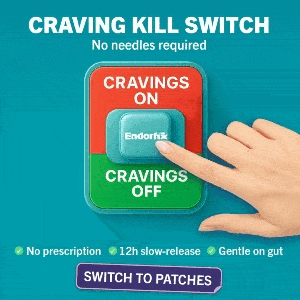With the number of HIV+ migrants entering NZ increasing, Body Positive has set up a ‘Welcome to New Zealand’ page on their website, providing eye-opening information and facts about how our country looks after HIV+ people, which is quite different compared to even some of our closest Western neighbours. Body Positive CEO Mark Fisher gives YOUR ex all the details.
In 2021, the Labour government changed the rules for HIV+ people wanting to immigrate to NZ. A migrant’s positive status had previously been treated as a ‘high-cost burden’ for our health system, which negatively impacted visa statuses. Tell us a bit about the campaign to get that changed.
Significant amounts of work took place over many years to enable this change. All of the HIV organisations came together along with clinicians, researchers and immigration consultants. This culminated in a joint submission by Malcolm Pacific Immigration, Body Positive, Positive Women and the New Zealand AIDS Foundation (now known as the Burnett Foundation Aotearoa) to Immigration New Zealand and the eventual removal of HIV as a specific reason to be denied a visa. This change came into effect in October 2021. An HIV test is still conducted as part of a health examination, but this does not lead to an automatic exclusion.
With that change, how does NZ rate on a worldwide scale – in terms of how friendly, safe and accessible we are for HIV+ migrants?
NZ was previously ranked as a yellow country by UNAIDS due to restrictions on people living with HIV. We are now classed as a green country as we don’t place restrictions on entry, stay or residence based on HIV status, joining 203 other green countries. We were one of the few Western countries that maintained restrictions for that long.
Body Positive has since set up a ‘Welcome To New Zealand’ page on their website. What were the key aims of doing that?
We noticed a significant increase in people who were first diagnosed overseas and have received several enquiries from people who have recently arrived or are thinking of moving here. This increase is a reflection of a broader rise in immigration as NZ rebuilt its workforce post-Covid, so the migration of people with HIV from overseas also saw an increase in numbers as our immigration policies were no longer blocking them.
These were people mostly from countries in Asia, Africa and Latin America. As a lot of the questions we received were similar and the NZ health system can be difficult to navigate for someone newly arrived or with English as a second language, we launched our ‘Welcome to NZ’ page on our website in May this year.
Our peer support team has people who speak Chinese, Spanish and Portuguese, so we have been able to make the ‘Welcome to New Zealand’ page available in multiple languages and continue to translate into more languages as we are able. Funds are limited, and most translation has been provided through volunteers in the queer community.
What facts that the web page provides are most likely to surprise people?
That medication is available and free for everyone with HIV. This is to enable people to stay healthy and undetectable to minimise the impact on our health system. 92% of people coming to NZ are undetectable, and we want to help them maintain that status.
How to access HIV care is also something people are interested in, as this is different from other countries – even Australia. The range of medications is also of interest, as we don’t have a lot of the medications available in the rest of the world, which can require people to switch medications when they arrive.
The other surprising piece is our criminalisation laws. In NZ, if you don’t disclose your HIV status to partners and don’t use a condom, you can be charged (even without transmission of HIV)! Things like being on PrEP and undetectable are not recognised by case law, yet we know these are effective strategies to eliminate any risk of transmission – even better than condoms! Other parts of the world have moved forward with their criminalisation of HIV, but NZ is lagging in this space, which can come as a surprise to newcomers.
When people move to NZ, it is often to get away from busy city lives to something more laidback. How well is the health of HIV+ people catered for in our rural communities and areas where immigrants come to work on farms, vineyards and orchards?
In NZ, HIV is managed by specialists, and these are only available through infectious disease clinics at hospitals and in some sexual health centres, not through local doctors. In these cases, some people have been charged a lot of money for the clinic visit, and this barrier has made them hesitant to access care. We’ve even had people drive from Napier to Auckland to access care due to the poor experience they had locally.
Unfortunately, there are limited numbers of clinics around the country, which means that people in rural areas may have a long way to travel to access care. This includes places like Queenstown, with the closest clinics being Dunedin and Christchurch. Telehealth (telehealth.org.nz) has a part to play in this area to make access easier, but this is still evolving.
In general, how well do you think our health care system looks after our HIV+ whanau, and what improvements should be made?
Overall, we do a good job with people being seen quickly and HIV treatment being available for everyone. There has been a focus on increasing access to testing to ensure people living with HIV know their status and can be engaged in care, which is the first and most important step.
Improving access for the regions is something that needs to be improved, and work is happening in this space. The other area is the available medications. Most HIV+ people who come into NZ need to be switched to locally available regimens as we don’t have the latest drugs. Globally, there has been a shift to having one pill a day as the preferred treatment option, with many variations available. NZ has fallen severely short in this space, with only two products being approved. One was approved this year, which was a welcome addition and gives people choice, but none of the others are available or funded through Pharmac. Most recently, long-acting injectables have been made available in the likes of Australia and Canada, which is where you can take an injection every 2 months instead of daily pills, but there is no movement on making this available in NZ at this time.
For more info, visit bodypositive.org.nz
























